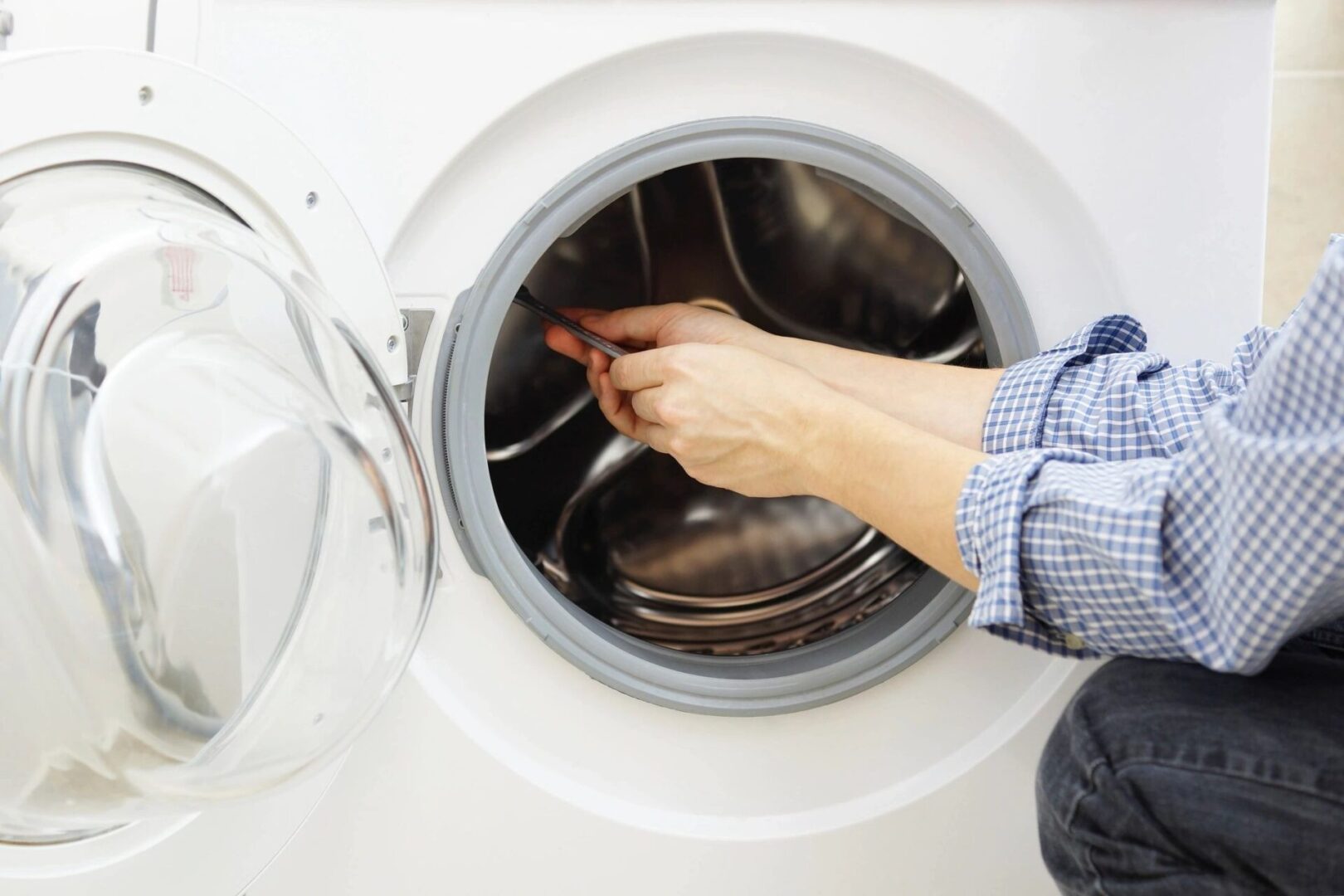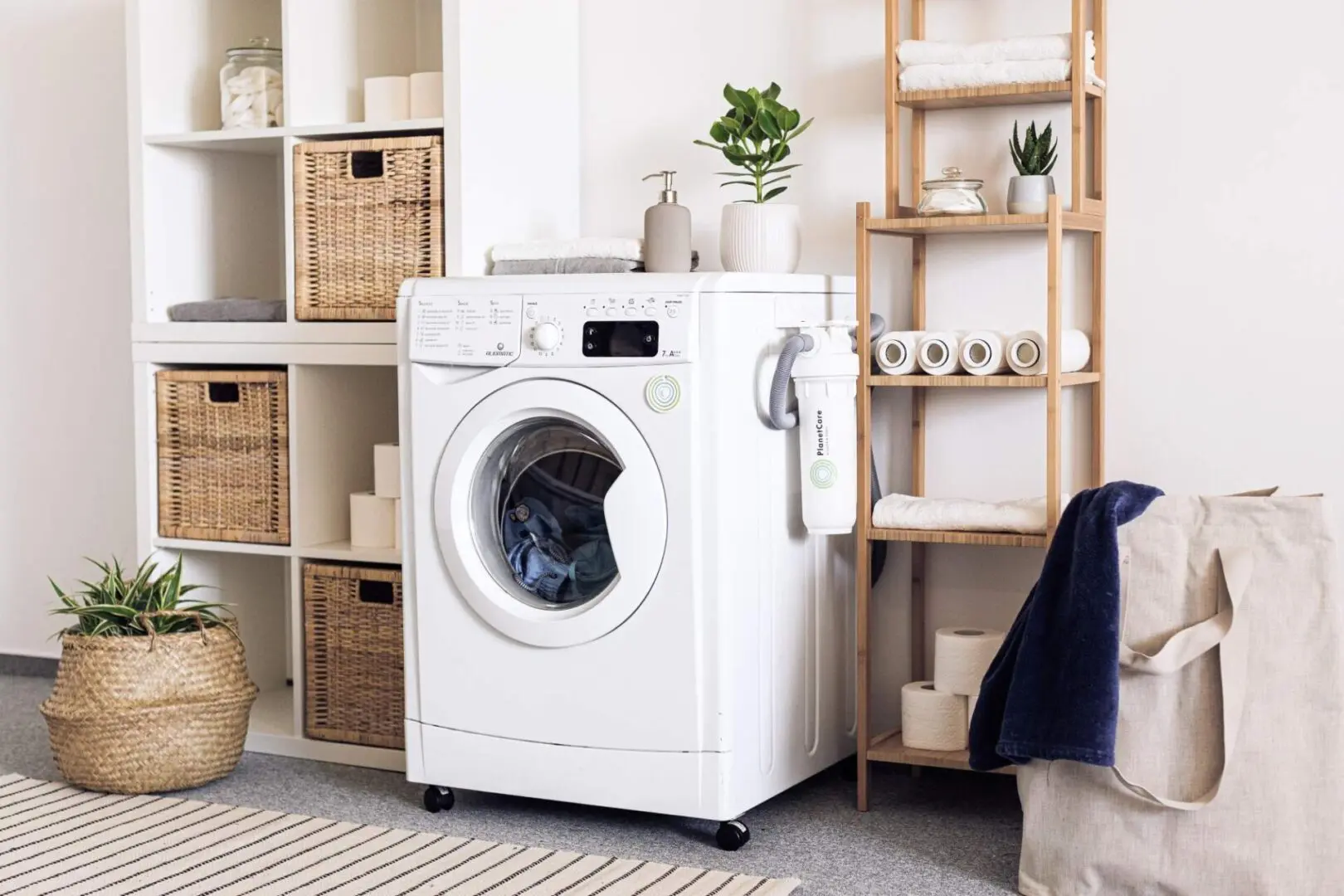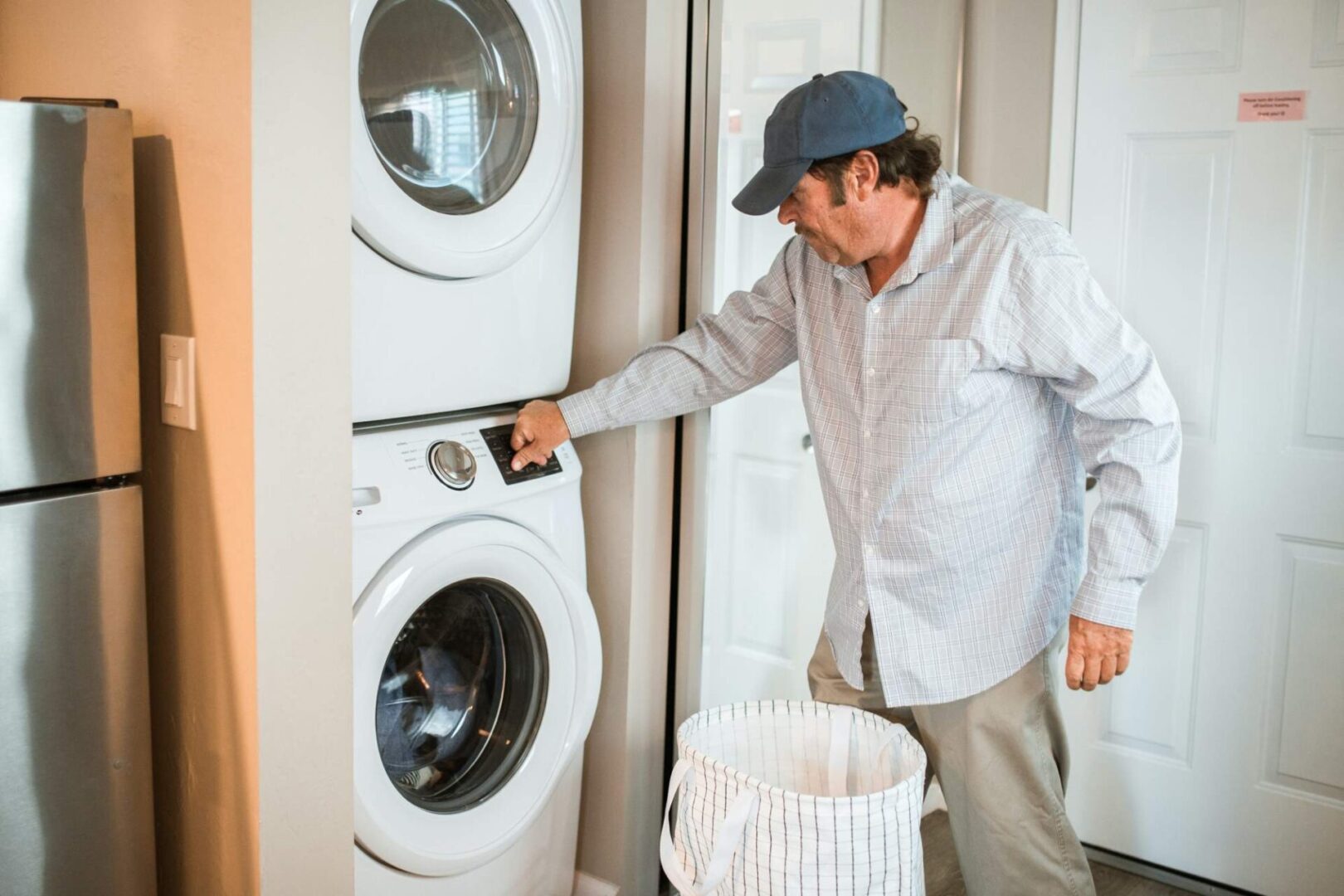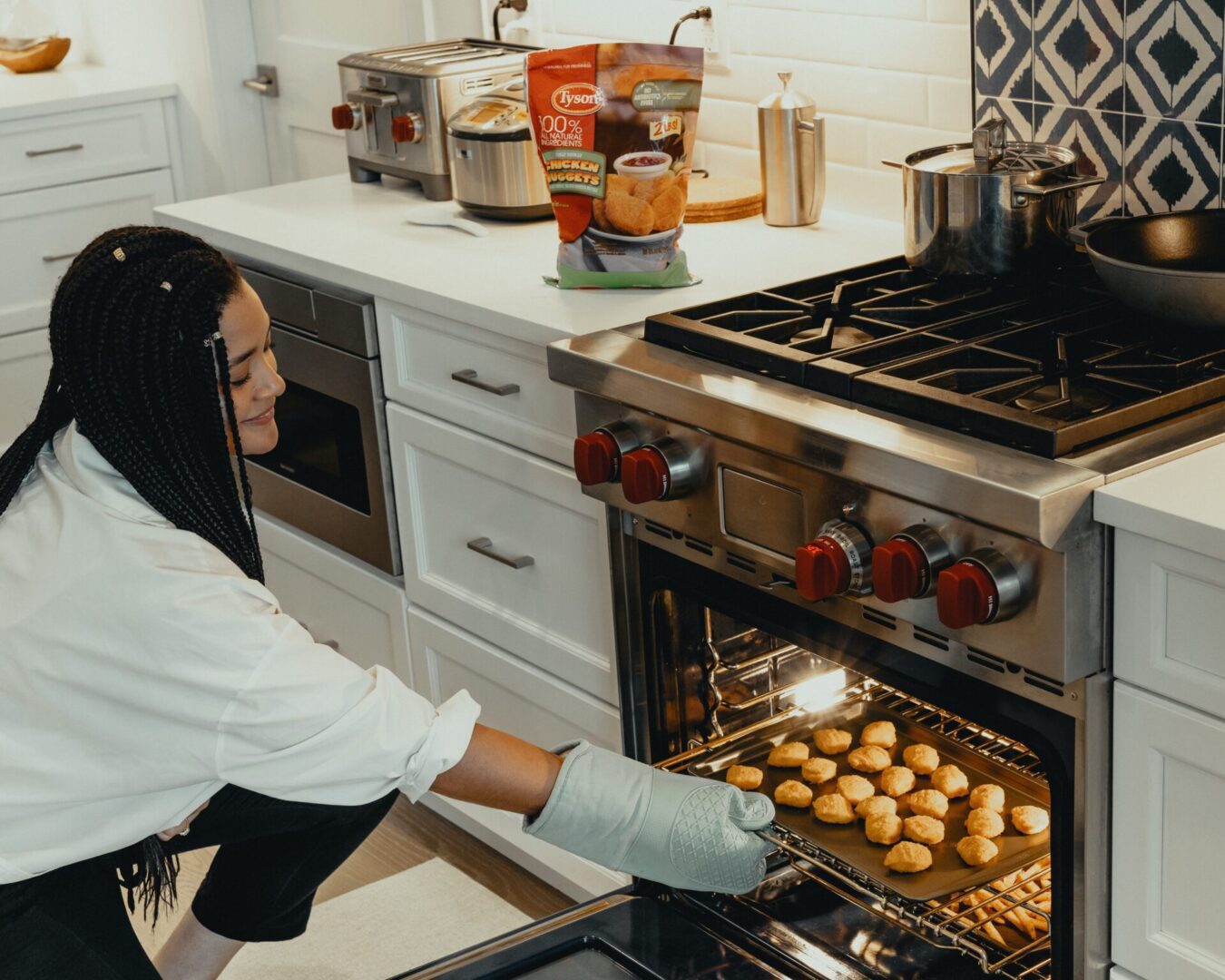Use and Care Tips
There's no need to be taken captive by your appliances!
Listed below are some helpful hints for better maintenance and use of your home appliances. These tips can help you save time, extend the life of your appliances, and help get more out of them. Please read our disclaimer for complete details about the information we present in this section of the site. Click on the topic below for more information:


Washing Rubber-backed Mats in a Washing Machine
You don't want to wash rubber mats in a washing machine because the rubber backing deteriorates over time. Eventually, it will fall apart and clog up the drain and water lines, thus resulting in a very expensive repair.

Cleaning Dishes More Effectively
Soft water is highly recommended. It helps the dishwasher perform as designed. Test for hard water and purchase a water softener if necessary.
Scrape the dishes off before putting them in the dishwasher. A restricted wash system results in immediate filming and unsanitary conditions. Do not wash your dishes before washing your dishes. Don't confuse scraping with washing. We need dirty dishes to get clean dishes. The detergent needs the dirty dishes to break down the soil as it should.
Always purge the hot water at the sink until it is hot just before running the dishwasher. This will ensure the first fill is hot. Also, check to make sure that your hot water heater is set between 120-125F degrees. Most units are shipped and turned way down. Keep in mind that hotter is not better. Any hotter with dishwashers, and you get what is called flash drying. This is when the environment in the dishwasher is so hot that after the final rinse, instead of the water running off the glass and taking with it all its impurities, it is instantly baked on.
Choose the correct cycle. The average consumer wants to use the shortest cycle possible to save money and then blame the dishwasher for not cleaning. Shorter is not necessarily better. Once you've chosen the proper cycle, do not interrupt it.
Don't use a detergent that has a rinse aid in it. You can use liquid rinse aid in the dispenser. This causes suds in the final rinse. Plain CASCADE® and rinse aid in the dispenser are recommended.
To get rid of the film, try a product called GLISTEN®. Follow the instructions, bearing in mind that you may need to do it twice. If the problem is not corrected, disassembly may be necessary and possibly even part replacement. GLISTEN® is also a deodorizer. It is recommended that you use it twice a year, whether you need it or not. An ounce of prevention...
Checking and Replacing Washing Machine Water-fill Hoses
Hoses that burst always give a warning first. At the 90-degree turns, either coming from the wall or at the washing machine connections, the hoses 99% of the time will form a large bubble, giving the homeowner a warning.
Look for this situation When replacing:


Drying Clothes More Effectively
Avoid kinking exhaust vent behind the dryer. The shorter the line, the better.
Exhaust ducting should be of a metalized semi-rigid/flexible material. Do not use vinyl, as it can be easily crushed. Vinyl will not withstand heat as well as metalized ducting.
Check your outside vent hood. Clean if necessary. It is not advisable to use mesh wire or grates to cover the vent hood. This will definitely help keep rodents or birds out of your exhaust but can easily clog as some lint always makes it through the dryer's lint screen.
The best vent hood has a flapper that opens when the dryer is in use and closes when off. Verify proper operation of the flapper periodically.
Clean lint screen between loads and more frequently if drying material with higher cotton content.
Do not overload the dryer. Too many clothes will inhibit the proper circulation of heated air between and through the garments. On the other hand, too few clothes can create a similar problem by bunching up the garments and disallowing proper airflow through the clothes. Proper airflow dissipates the moisture from the clothes faster, making for a faster dry time.
In the winter months, dryers located in a heated area of the home will dry more quickly than in a non-heated utility room.
Drying multiple loads one after the other will reduce overall dry time by utilizing heat retained by the dryer from previous loads.
Recheck pockets before putting clothes into the dryer. Chewing gum may make it through the wash with little to no consequence, but your luck will run out if it is put into the dryer. Gum, pencils, change, nails, needles, jewelry, etc., can damage clothing as well as damage your appliance (as a rule of thumb, do not lay loose change or other small articles on top of your appliances).
Using Front Load Washers
Front-load washing machines provide superior wash results compared to top-load machines. They allow clothes to remain newer looking for a longer period of time and save energy in the form of reduced water, detergent, and electricity consumption.
Sorting and loading the clothes correctly will provide the best results when used with a detergent approved for "HE" High-Efficiency washers.
Separate clothes that shed lint (chenille and terrycloth) from clothes that attract lint (synthetics, corduroy, velveteens).
Pilling, which can look like lint, is produced by normal wear on cotton/polyester blend fabrics. To reduce pilling, wash these fabrics inside out, and use the delicate wash cycle.
To prevent "yellowing" of whites, use the hottest recommended temperature for each type of load.
Retain the dark or bright colors by washing in cool or cold water.
Read the labels on the clothing for recommended wash cycles, a simple but often overlooked tip.

Cleaning Range/Stove Burner Drip Pans
Drip pans serve a variety of purposes, from catching food and spills to radiating heat back to the cooking surface. Patience is the key when you decide to clean drip pans. There are many suggestions and methods for cleaning them.
Place drip pans in a plastic or zip-lock bag, mix in bowl ammonia diluted with water and seal the bag, letting it set for a while. Then scrub the pans with a scouring pad. Use a paste of baking soda and water to scrub.
Soak the pans in hot water and then place them in the dishwasher. Use an oven cleaner.
All of these will work. Please note that the suggestion of ammonia can create health risks. There are also risks and hazards with the oven cleaner, so please follow the directions on the containers. Your best bet is to soak the drip pans in hot water for a while, then use a nonabrasive cleaner and good old elbow grease. If time is of the essence, or you just don't want to bother cleaning them, replacements can be obtained at reasonable prices. The best thing you can do is to keep drip pans clean. Clean them immediately after use or spills once the burner has cooled.

WARNING: The last thing you want to do is wrap drip pans in aluminum foil. This is the same as having bare wires exposed. It can cause short circuits, fire, or other serious problems.
Consumer Alert for Conejo Valley Residents
This information could save you 1000's of $$$ and headaches
Read on to learn how consumers get robbed on a daily basis by crooked appliance repair service providers and what you can do to stop it from happening to you.....
As a resident of the Conejo Valley for the last 35 years and an appliance service provider for the last 20 years, I have encountered hundreds of distressed residents that have called us for help. All too often, well-trusting residents were overcharged and/or poorly serviced on their appliance repair needs. A recent example was Ms. H. from Westlake Village, that hired an appliance repair service company to repair her refrigerator. This company informed her that the refrigerator needed $680 in repairs. She paid the fee in good faith. Three days later, the refrigerator stopped working. After numerous unsuccessful attempts to have the company return for said repairs, she contacted us. It turned out that the repair was conducted with a cheap aftermarket part and that the fair market price with the original factory part should have been $215 according to the standardized pricing guide. This guide is used nationwide by any reputable appliance repair service company.
Once you have read these next 12 tips, the easier you will be able to recognize a good service provider and save money and problems in the future. This is our contribution to our neighbors in uncertain economic times to make sure your money is well spent.


